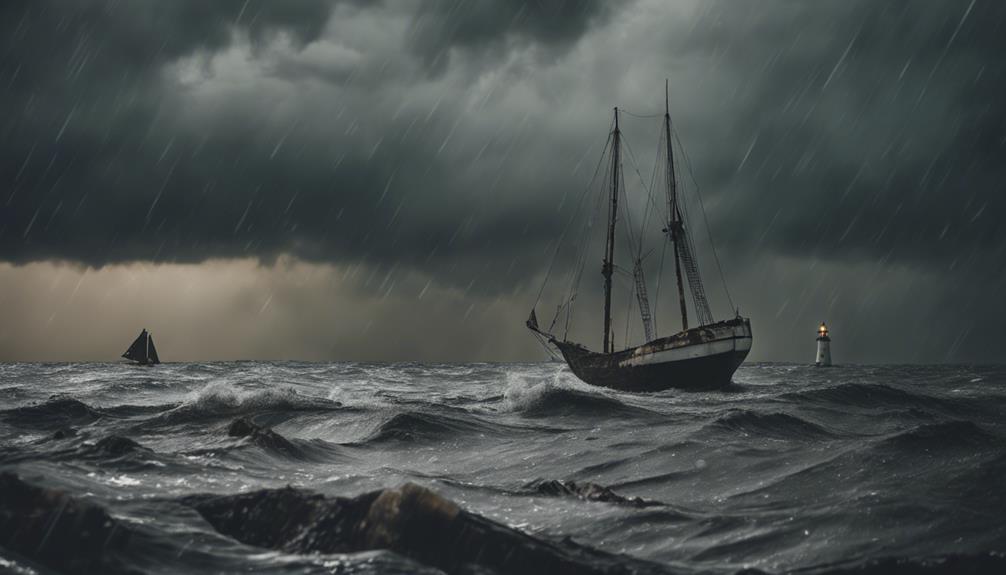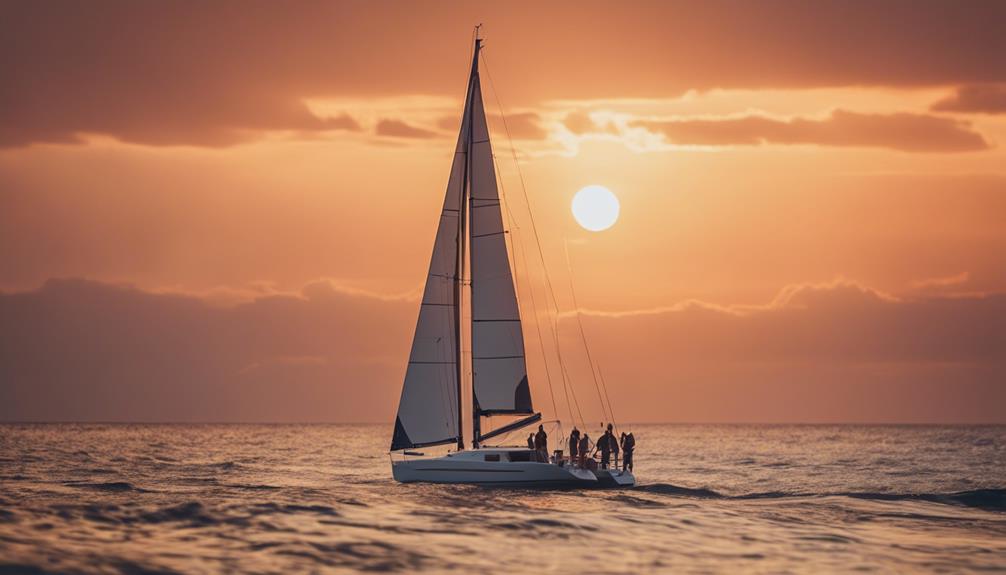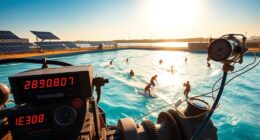When you're searching for sailboats, steer clear of models with significant design flaws, like the MacGregor 26, which struggles with stability due to a heavy motor. The MacGregor 25 also faces criticism for inconsistent performance. Poor maintenance can worsen safety risks, leading to catastrophic equipment failures. Remember, neglecting these issues not only affects your sail experience but could endanger your safety. Look for boats with sound structure and adequate ballast to avoid these nautical nightmares. If you want to know more about making an informed choice in sailboats, keep exploring the topic further.
Key Takeaways
- MacGregor models, especially the 26, are criticized for stability issues due to heavy motors on lightweight hulls.
- The MacGregor 25's cast iron swing keel is known for inconsistent performance, raising safety concerns in various conditions.
- Top-heavy designs, like the Vasa, illustrate the risks of inadequate ballast and poor stability, leading to catastrophic failures.
- Neglecting maintenance can result in serious hazards, including rigging failures and unreliable hardware, jeopardizing safety on the water.
Common Design Flaws
When it comes to sailboats, common design flaws often lead to serious safety concerns and performance issues on the water. You might encounter models that are top-heavy or lack sufficient ballast, which can cause catastrophic failures shortly after launch. These design flaws not only threaten your safety but also diminish the overall sailing experience.
Inadequate rigging or weak hull integrity can create significant stability issues, increasing the risk of capsizing or sinking. If you're considering a sailboat, pay attention to the hardware. Poorly designed components can lead to frequent equipment failures, leaving you anxious and compromising your safety while sailing.
Additionally, some sailboats prioritize aesthetics over functionality, resulting in vessels that look great but perform poorly in challenging conditions. A sleek design may catch your eye, but if it's plagued by design flaws, you could find yourself in precarious situations out on the water.
To guarantee a safer and more enjoyable sailing experience, it's essential to research and avoid boats with these common design flaws. Always prioritize quality and stability to enhance your adventures on the sea.
User Experiences and Reviews
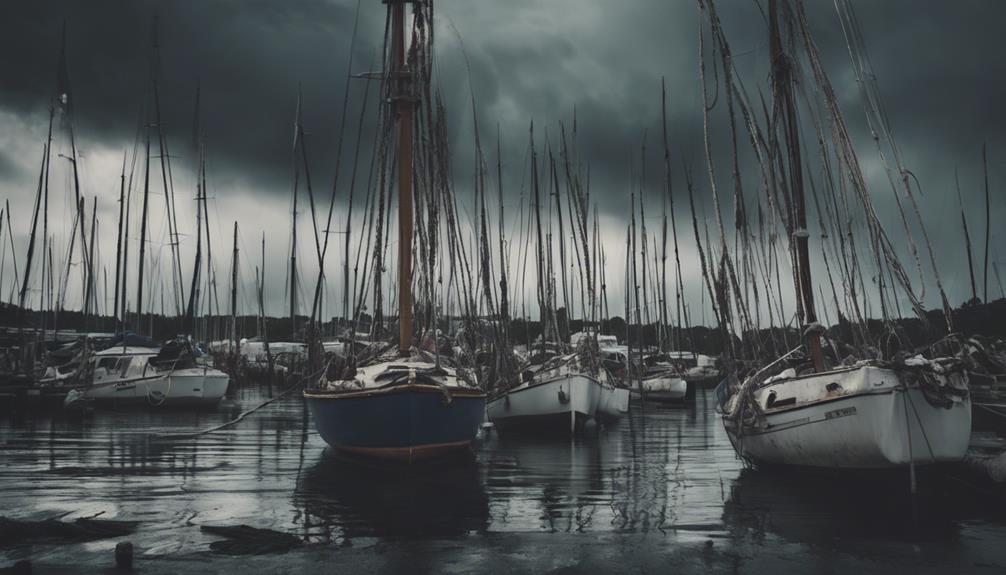
Sharing their experiences, many sailors provide valuable insights into the strengths and weaknesses of various sailboat models, highlighting the importance of user reviews in making informed decisions.
For instance, owners of the MacGregor 26 often voice concerns about its heavy 60 HP motor paired with a lightweight hull, affecting stability and overall performance when you try to sail away. Similarly, while the MacGregor 25 is praised for its cast iron swing keel, mixed reviews about its motor capacity of only up to 10 HP reveal issues in diverse sailing conditions.
Another common complaint revolves around poor fit and finish in certain sailboat models, which can lead to safety risks and decreased quality. User experiences underline significant satisfaction variances among manufacturers, where some boats are deemed unsafe due to design flaws and hardware durability concerns.
Neglected sailboats can also evoke sadness within the sailing community, as they symbolize a lack of care and can lead to dangerous situations if left unmaintained.
Historical Failures in Sailing

Historical failures in sailing, like the infamous Vasa disaster, highlight the dire consequences of poor design choices and inadequate testing in shipbuilding. Launched in 1628, the Vasa sank just 20 minutes after its debut, primarily due to its top-heavy structure and insufficient ballast. Instead of showcasing Swedish naval power, it became a tragic symbol of overambition, leading to a significant loss of life.
One key issue was the vessel's deck level, which was far too high for stability. This design flaw made the ship vulnerable to capsizing, a lesson that resonates even today. The Vasa's failure serves as a cautionary tale in naval architecture, emphasizing the critical importance of stability and design integrity.
After lying submerged in Stockholm harbor for over 300 years, the Vasa was salvaged in 1961 and now stands as a prominent museum exhibit. The lessons learned from this disaster have profoundly influenced modern naval engineering, underscoring the necessity of rigorous testing and evaluation of vessel design before any launch.
When considering a sailboat, remember the Vasa and the importance of a well-thought-out design to avoid becoming part of maritime history's tragic tales.
Maintenance Issues and Neglect
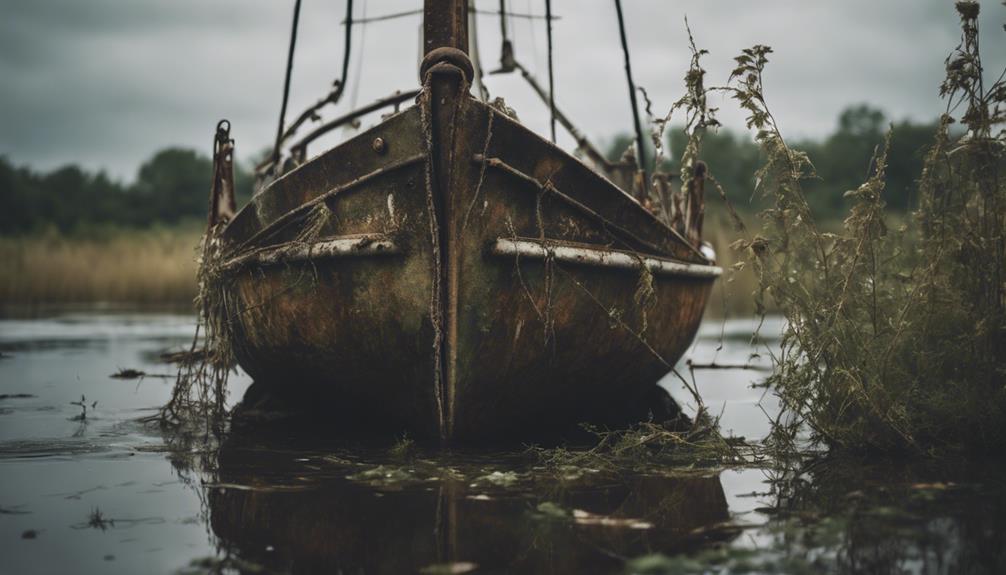
When you skip regular maintenance on your sailboat, you're putting both your safety and enjoyment at risk.
Neglect can lead to serious issues like corroded hardware and damaged rigging, which can make sailing dangerous.
Ultimately, a well-maintained boat not only performs better but also enhances your overall sailing experience.
Importance of Regular Maintenance
Regular maintenance is essential to guarantee your sailboat remains safe and seaworthy, preventing costly repairs from neglect. You'll want to pay close attention to both sides of your vessel, including the starboard side, where wear and tear can go unnoticed. Neglected sailboats often face serious safety hazards, like rigging failures and leaks. These issues highlight the need for consistent upkeep to maintain hull integrity and overall performance.
Don't overlook the importance of regular inspections, especially for lesser-seen parts of the rigging, such as chain plates. Broken components can lead to dangerous situations at sea, putting you and your crew at risk. A well-maintained sailboat not only reflects positively on you as a sailor but also demonstrates your commitment to safety and vessel performance within the sailing community.
Moreover, your individual sailing experiences can improve dramatically with proper maintenance. Sailors who prioritize upkeep generally report better performance and reliability, making their time on the water far more enjoyable. By staying proactive and dedicated to regular maintenance, you'll protect your investment and enhance your sailing adventures.
Consequences of Neglecting Repairs
Neglecting repairs can lead to dangerous consequences, from catastrophic rigging failures to compromised hull integrity that puts your safety at risk. When you ignore maintenance issues, you're not just risking your boat; you're risking your life.
Here are some serious consequences you should be aware of:
- Rigging Failures: Broken chain plates can cause the mast to collapse, leading to a potential accident.
- Water Ingress: Delayed repairs can result in hull damage, increasing the risk of sinking, especially in rough waters.
- Hardware Durability: Boats that suffer from neglect often have unreliable hardware, making them dangerous to operate.
- Catastrophic Equipment Failures: Without regular inspections, unseen parts of the rigging can fail while you're underway, putting everyone on board at risk.
Ultimately, neglecting repairs not only jeopardizes your safety but also affects your boat's resale value.
A well-maintained sailboat can serve you reliably for years, while a neglected one is a ticking time bomb waiting for disaster to strike.
Prioritize repairs to guarantee a safer and more enjoyable sailing experience.
Impact on Sailing Experience
Ignoring maintenance not only jeopardizes safety but also severely diminishes your overall sailing experience, turning what should be a joyful adventure into a source of stress and anxiety.
When you own a neglected sailboat, the risk of catastrophic failures, like rigging issues or hull integrity problems, skyrockets. These failures can lead to dangerous situations and ruin your day on the water.
Moreover, the psychological burden of sailing a neglected sailboat can weigh heavily on you. Constantly worrying about whether your boat will perform as expected detracts from the thrill of sailing. Instead of feeling the wind in your hair, you might find yourself preoccupied with potential equipment malfunctions.
Additionally, the financial implications of neglect can be steep. Increased repair costs and safety hazards make a neglected sailboat not just a liability but also a financial burden. Even if you decide to sell, a history of poor maintenance can diminish your boat's resale value and tarnish your reputation in the sailing community.
Performance and Safety Concerns
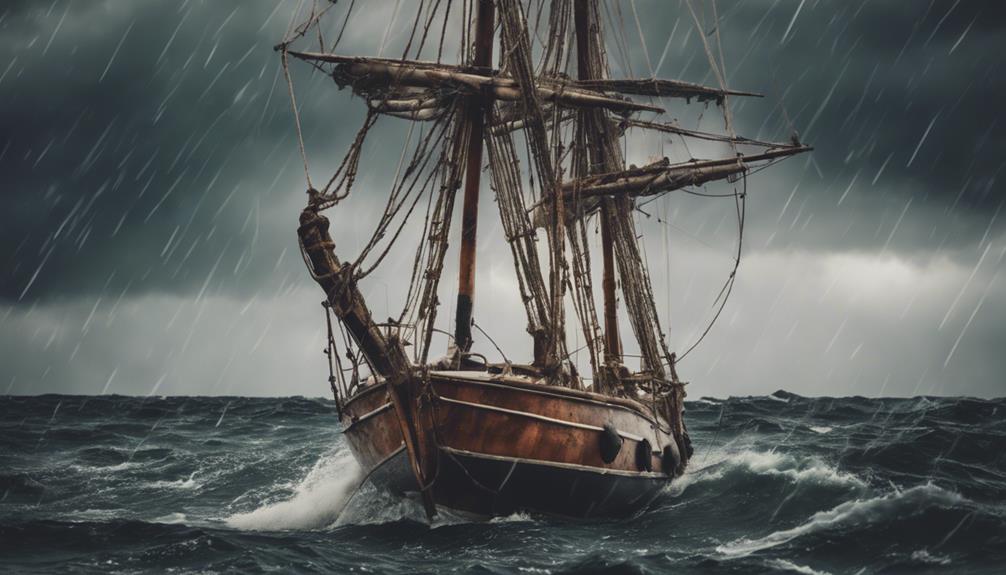
Sailboats often face performance and safety issues when they're poorly designed or inadequately maintained. A reliable naval architect plays an essential role in guaranteeing that the structural integrity and balance of a sailboat are up to par. When these elements are overlooked, you could find yourself in a precarious situation.
Here are some major concerns to take into account:
- Heavy Motors: Models like the MacGregor 26 can compromise stability due to their lightweight hulls.
- Design Flaws: The Vasa sank shortly after its launch, highlighting the importance of adequate ballast and a well-balanced structure.
- Hardware Durability: Poor fit and finish in some models can lead to hardware failures, risking your safety at sea.
- Neglected Maintenance: Regular checks on rigging and hidden components are essential; neglect can lead to catastrophic failures during your voyage.
Always remember that a well-designed and maintained sailboat not only enhances your sailing experience but also guarantees your safety.
Prioritize performance and safety to avoid turning your dream sailboat into a nautical nightmare.
Community Opinions and Preferences
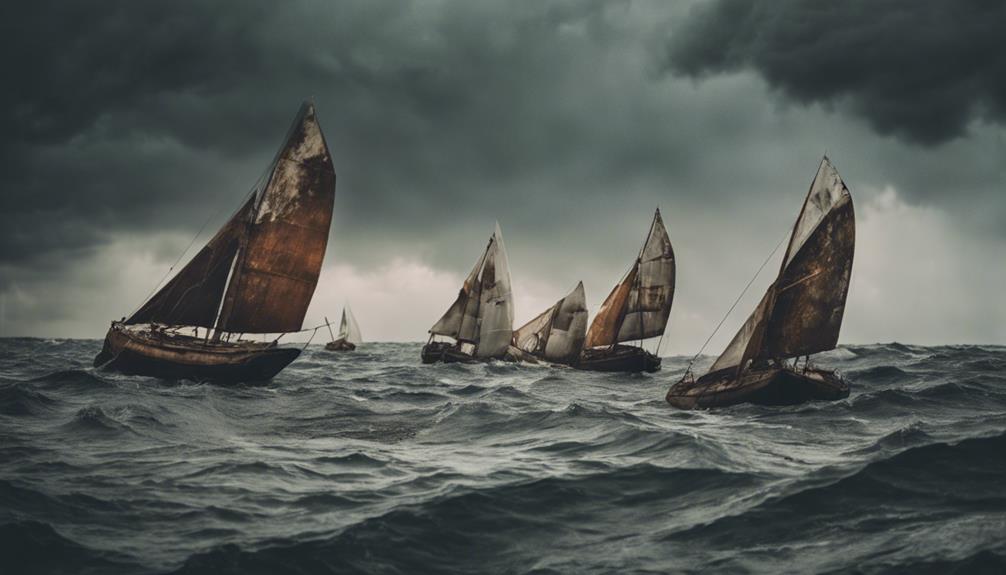
When it comes to owner experiences, you'll find a range of opinions about design flaws in various sailboats.
Some sailors share tales of frustrations with unstable models, while others highlight the charm of quirky designs.
Engaging in these discussions can help you better understand what to look for—or avoid—in your next sailboat.
Owner Experiences Shared
Many MacGregor owners share mixed feelings about their boats, highlighting both the affordable pricing and concerns over stability and performance. Last year, many sailors expressed their thoughts on community forums, revealing a wide array of experiences.
Here are some key insights from those discussions:
- Affordability: Many appreciate the low entry cost, making sailing accessible for newcomers.
- Stability Issues: Owners of the MacGregor 26 often report dissatisfaction with the heavy 60 HP motor on its lightweight hull, raising concerns about balance and handling.
- Ease of Trailerability: The MacGregor lineup is favored for its ease of transport, allowing for spontaneous weekend trips.
- Mixed Performance: While some find the MacGregor 25, with its cast iron swing keel, suitable for inland sailing, others criticize its overall quality and performance.
Design Flaws Noted
Community discussions frequently point out significant design flaws in various models, with owners expressing frustration over issues like stability and hardware durability. The MacGregor 26 often tops the list due to its heavy 60 HP motor on a lightweight hull, leading to safety concerns. Many sailors feel this combination compromises stability, making it unsuitable for varied conditions.
Similarly, the MacGregor 25's cast iron swing keel has faced mixed reviews regarding its performance. Sailors worry about the hull integrity, with reports indicating that some models mightn't meet the safety standards expected by their owners. Design flaws noted in these boats reflect a broader issue within the sailing community, where poor fit and finish detract from overall quality.
Historical vessels like the Vasa, which tragically sank due to insufficient ballast and a top-heavy structure, serve as cautionary tales. They remind you of the importance of sound design in ensuring safety at sea.
As you consider your next sailboat, it's vital to weigh these community opinions and avoid models that exhibit similar flaws. After all, your safety and enjoyment on the water should always come first.
Frequently Asked Questions
What Is the Safest Boat to Sail Around the World?
When you're choosing the safest boat for sailing around the world, consider models like Hallberg-Rassy or Pacific Seacraft. Their robust designs and safety features guarantee you stay secure in various ocean conditions.
What Was the Worst Sailing Disaster?
You might consider the capsizing of the MV Wilhelm Gustloff in 1945 the worst sailing disaster. With around 9,000 lives lost, it highlights the devastating impact of maritime tragedies throughout history.
Is There an Unsinkable Sailboat?
No sailboat's truly unsinkable. While some designs promise enhanced buoyancy, factors like maintenance and human error can compromise safety. Regular upkeep and preparation are essential to guarantee your vessel remains seaworthy and minimizes sinking risks.
What Is the Easiest Yacht to Sail?
You might think sailing's complicated, but the easiest yacht to sail is often the Catalina 22. Its lightweight design and forgiving nature make it perfect for beginners, ensuring you'll feel confident as you learn.
Are Small Sailboats Safer or Riskier Than Larger Ones?
When it comes to safety, opinions vary on whether small sailboats are riskier than larger ones. Some argue that the agility and simplicity of the smallest sailboat crosses atlantic, making it easier to navigate in rough waters. Others believe that larger boats offer more stability and resources, making them safer options for long journeys.
Conclusion
So, before you set sail on your next adventure, think twice about the boats we've highlighted.
Imagine being caught in rough waters on a vessel that can't handle the pressure. You wouldn't want to be the one stranded, would you?
Trust the experiences of others and steer clear of these nautical nightmares. Your safety and enjoyment depend on it.
What if the boat you choose today becomes your biggest regret tomorrow?
Choose wisely, and keep the seas thrilling, not terrifying.

